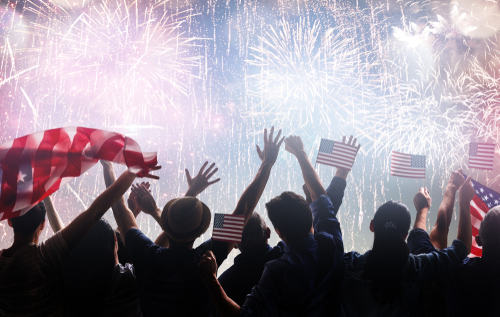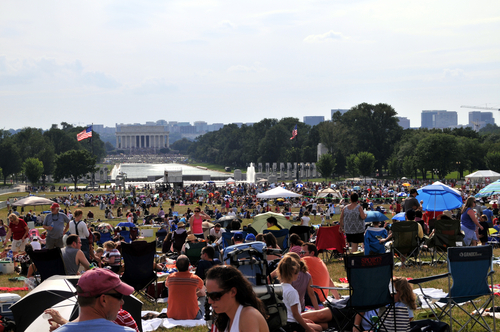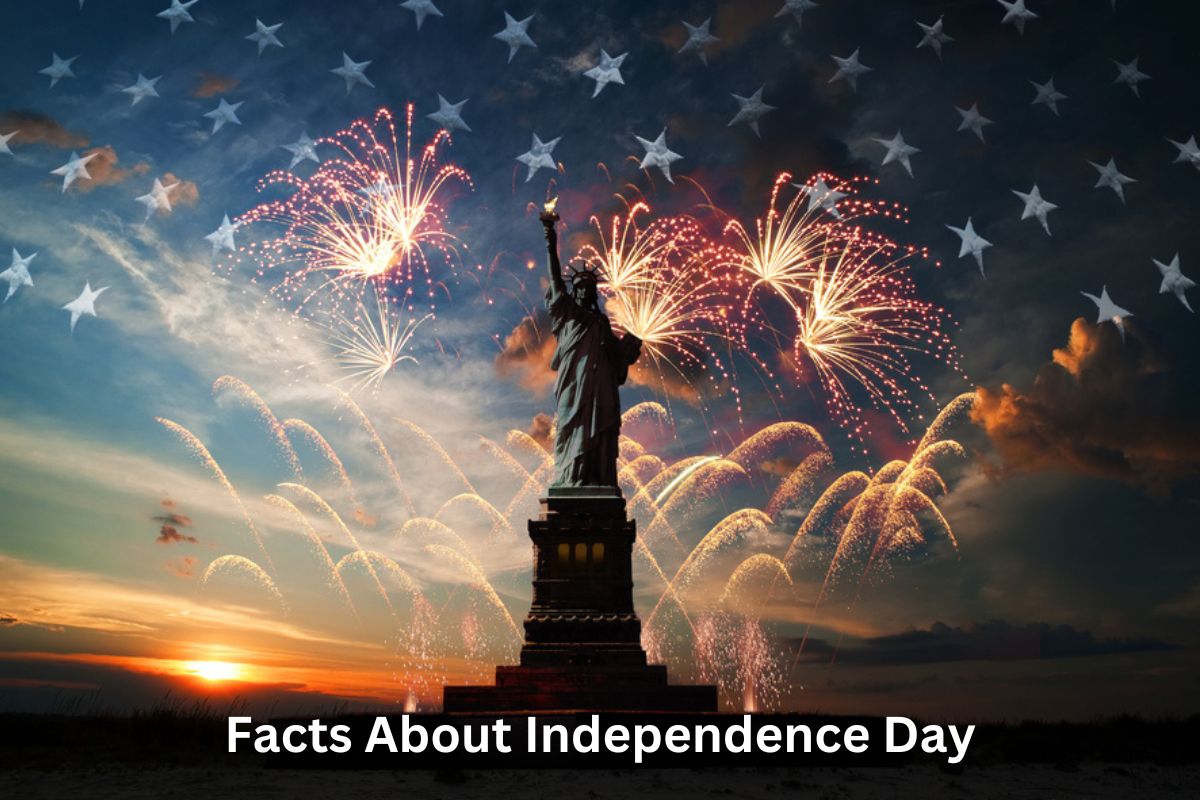Independence Day, also known as the Fourth of July, is a significant and cherished national holiday in the United States. It commemorates the country’s declaration of independence from British rule on July 4, 1776.
This historic event marked the birth of a new nation, founded on principles of liberty, equality, and self-governance.
Independence Day holds great cultural and patriotic significance, symbolizing the American spirit and the enduring values upon which the United States was built.
It is a day of celebration, marked by various traditions, such as fireworks, parades, family gatherings, and the display of the American flag.
This holiday not only serves as a reminder of the nation’s historical journey toward independence but also provides an opportunity for Americans to reflect on the principles and ideals that continue to shape the country’s identity.
Independence Day is a time to come together, express gratitude for the freedoms enjoyed, and honor the sacrifices made by those who fought for and continue to defend the nation’s independence.
Independence Day Facts
1. Independence Day commemorates the USA’s independence from British rule.
Independence Day, also known as the Fourth of July, is a national holiday in the United States commemorating the country’s independence from British rule.
Also Read: Timeline of Declaration of Independence
The American Revolution, which began in 1775, culminated in the adoption of the Declaration of Independence on July 4, 1776. This historic document declared the United States to be a sovereign nation, free from British control.

2. The Declaration of Independence was adopted by the Continental Congress on July 4, 1776
The Declaration of Independence, drafted primarily by Thomas Jefferson, was officially adopted by the Continental Congress on July 4, 1776.
The document outlined the colonists’ grievances against King George III and asserted their natural rights to “life, liberty, and the pursuit of happiness.” It also laid the foundation for a new form of government based on the consent of the governed.
3. The first celebration of Independence Day took place on July 8, 1776, in Philadelphia, Pennsylvania
The first celebration of Independence Day took place on July 8, 1776, in Philadelphia, Pennsylvania. This early observance occurred just a few days after the Continental Congress had approved the Declaration of Independence.
The city organized a variety of festivities, including public readings of the Declaration, parades, and bonfires. The public rejoiced in the newfound sense of unity and freedom.
4. John Adams believed that Independence Day should be celebrated on July 2, the day the Continental Congress voted in favor of independence
John Adams, a prominent Founding Father and the second President of the United States, believed that Independence Day should be celebrated on July 2. On that day in 1776, the Continental Congress voted in favor of independence from Britain.
Adams famously wrote to his wife, Abigail, saying that July 2 would be celebrated “with pomp and parade, with shows, games, sports, guns, bells, bonfires, and illuminations.”
However, despite Adams’ preference, July 4 became the date commonly associated with the holiday, as it marked the formal adoption of the Declaration of Independence.
5. The original 13 American colonies were the first states to declare independence from Britain
The original 13 American colonies, including Massachusetts, New York, Pennsylvania, and Virginia, were the first states to declare independence from Britain.
These colonies had been under British rule for many years, but mounting grievances over issues such as taxation without representation and infringements on their rights led to a desire for independence.
The Declaration of Independence served as a unifying document, announcing the separation of the colonies from British rule and establishing the United States of America as an independent nation. Today, Independence Day is celebrated across all 50 states, reflecting the unity and diversity of the entire country.

6. The Fourth of July became an official federal holiday in 1870
he Fourth of July became an official federal holiday in 1870 when President Ulysses S. Grant signed it into law.
This act recognized the significance of Independence Day and established it as a day of national celebration and remembrance. It also ensured that government employees would have a day off to commemorate the country’s independence.
7. Independence Day is often associated with outdoor barbecues, picnics, and family gatherings
Independence Day is often associated with outdoor barbecues, picnics, and family gatherings. It has become a tradition for friends and families to come together on this day and celebrate with food, games, and socializing.
Grilling burgers, hot dogs, and other favorite foods has become a quintessential part of the holiday, symbolizing the summer season and the joy of sharing a meal with loved ones.
8. Fireworks are an iconic part of Independence Day celebrations
Fireworks are an iconic part of Independence Day celebrations. The tradition of using fireworks to mark the holiday began in Philadelphia in 1777, one year after the initial Independence Day celebration.
The colorful bursts of light and sound are seen as a representation of the rockets and bombs that were used during the American Revolution.
Fireworks displays have become increasingly elaborate over the years, with cities across the country competing to create breathtaking spectacles for their communities to enjoy.
9. The largest annual fireworks display in the United States is the Macy’s Fourth of July Fireworks in New York City
The largest annual fireworks display in the United States is the Macy’s Fourth of July Fireworks in New York City. This grand event takes place over the East River, with synchronized music and a stunning array of pyrotechnics lighting up the night sky.
It attracts millions of spectators, both in person and through televised broadcasts, and has become a beloved tradition for many Americans across the country.
10. The Liberty Bell in Philadelphia is a symbol of American independence
The Liberty Bell in Philadelphia is a symbol of American independence. Cast in 1752, the bell originally hung in the Pennsylvania State House, now known as Independence Hall, where the Declaration of Independence was adopted.
The Liberty Bell gained its iconic status when it was rung to mark the reading of the Declaration to the public on July 8, 1776. Today, the Liberty Bell is displayed in the Liberty Bell Center, and visitors can see the crack that developed in the bell in the 1840s.
On Independence Day, it is tapped thirteen times to honor the original thirteen colonies and commemorate the ideals of liberty and freedom. The Liberty Bell has become a powerful symbol of American democracy and the ongoing pursuit of liberty.
11. The American flag is prominently displayed during Independence Day celebrations.
The American flag, with its thirteen red and white stripes representing the original colonies and fifty stars representing the states, is prominently displayed during Independence Day celebrations.
Many people decorate their homes, streets, and public spaces with flags as a symbol of national pride. It is common to see flags flying high on flagpoles, displayed on buildings, and even worn as clothing or accessories.
The flag serves as a visual representation of unity, patriotism, and the enduring ideals of the United States.
12. The National Independence Day Parade takes place annually in Washington, D.C.
The National Independence Day Parade takes place annually in Washington, D.C. The parade features bands, military units, and patriotic floats, showcasing the rich cultural diversity and historical significance of the nation.
The route passes by famous landmarks such as the White House, the U.S. Capitol, and the Washington Monument. Thousands of spectators gather along the parade route to witness this vibrant display of national pride and honor the country’s independence.
13. Many cities and towns across the United States hold parades, concerts, and other community events
Many cities and towns across the United States hold parades, concerts, and other community events to celebrate Independence Day.
These festivities often showcase local culture, history, and traditions. Floats, marching bands, dancers, and various community groups participate in the parades, creating a festive atmosphere.
Community concerts featuring patriotic music are also common, with live performances of national anthems and popular American songs. These events foster a sense of community and provide an opportunity for people to come together and celebrate their shared heritage.
14. The Nathan’s Famous Hot Dog Eating Contest is held on July 4th each year at Coney Island, New York
The Nathan’s Famous Hot Dog Eating Contest has become a quirky and famous tradition associated with Independence Day. Held annually on July 4th at Coney Island, New York, the contest attracts professional competitive eaters who compete to eat the most hot dogs within a specific time limit.
The event has gained significant media attention and is televised nationally, drawing a wide audience fascinated by the competitors’ remarkable eating abilities.
It has become a unique and somewhat humorous aspect of Independence Day celebrations, showcasing the diversity of traditions associated with the holiday.
15. Independence Day is not only celebrated in the United States but also by Americans living abroad. U.S. embassies and military bases around the world
Independence Day is not only celebrated within the United States but also by Americans living abroad. U.S. embassies, consulates, and military bases around the world often organize events and gatherings to mark the occasion.
These celebrations provide an opportunity for Americans overseas to come together and commemorate their country’s independence, fostering a sense of community and connection with their homeland.
These events may include traditional ceremonies, flag-raising ceremonies, cultural performances, and displays of American cuisine. They serve as a reminder that the spirit of Independence Day extends beyond national borders and is celebrated by Americans worldwide.
